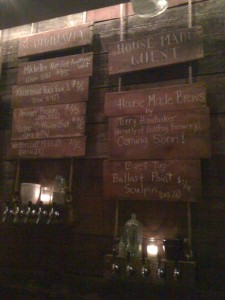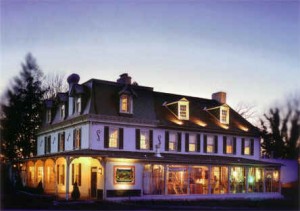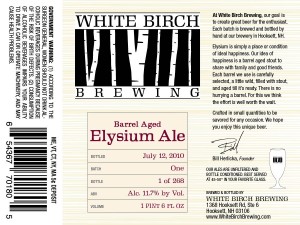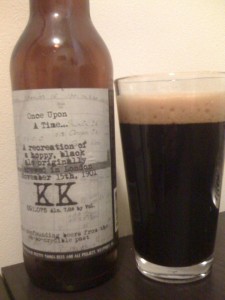
While American Craft Beer Week may not get people as motivated around these parts as Philly Beer Week, Victory Brewing Company chose this week to host their first all-women event: Girls Just Wanna Have Suds, featuring the female-brewed collaboration beer, Project Venus. At the appointed hour, the brewpub’s back room was quite full - there’s obviously demand for gatherings like this one, and the attendees are a largely punctual bunch.
Food and beer pairing stations were set up around the room; an endive and jicama appetizer went with Summer Love (in a slightly different formulation from last year’s offering), a goat cheese appetizer joined with Helios, pistachio-encrusted turkey (strangely, wonderfully compelling) was paired with Headwaters Pale Ale, and mussels played a supporting role to Project Venus, the star attraction. Only one keg of the featured beer made its way from Cambridge to Pennsylvania, but its origin there is worth mentioning. Devised by Megan Parisi of Cambridge Brewing Company, Laura Ulrich of Stone and Whitney Thompson of Victory, the beer marks the first female-driven collaboration brew at a commercial American brewery, although anyone who knows their beer history knows it marks more of a return to How Things Always Were.
The beer was brewed in Cambridge on their fifteen barrel system; it’s a dubbel, but quite unlike your typical Belgian offering. The recipe included blood oranges and saffron, and the resulting ruby-brown beer packs something of a wallop (though not, it must be said, a Hop Wallop) at around 9% ABV. My initial concern was that the beer might be quite sweet, given its base style and the addition of fruit, but the oranges impart a pleasant, slightly tart citrus flavour, while the overall taste remains a rounded maltiness. The finish is rather chocolately, though a relatively dry chocolate in my opinion - certainly not syrupy or overly sweet. Brewer Whitney Thompson described the finish as ‘like a Tootsie Roll’ and that was very apt.
The Project Venus concept is catching on worldwide; in the UK, Sara Barton of Brewster’s Brewery (one of my favo(u)rites) joined up with Sara Carter of Triple fff Brewery, Michelle Kelsall from Off Beat Brewery, Kathy Britton from Oldershaw Brewery and Gráinne Walsh of Metalman Brewing Company in Ireland to create Venus Jade, a hoppy but very sessionable ale. The group aims to create more beers together in the near future. In Canada, Claire Connolly of Big River Brewpub led a team of brewsters to create something a little Belgianesque, with some cherrywood-smoked malts, just in time for Vancouver Beer Week, and other projects are in the works elsewhere. With the Pink Boots Society bringing women in the industry together, it stands to reason that we'll be seeing many more similar projects in the future.
As female drinkers of craft beer, we’re spoiled for choice in this region - In Pursuit of Ale and West Chester Beer Ladies offer local women a chance to get together to enjoy and learn more about great beer, while Seattle and Portland have recently welcomed Barley’s Angels chapters (Rogue has even ‘recognized‘ them as part of Rogue Nation) - indeed, there are groups as far afield as Buenos Aires and Sydney. Women Enjoying Beer, Girls Pint Out and Ladies of Craft Beer all offer camaraderie and learning opportunities for the distaff drinker.
It almost seems a bit unfair to the male beer drinker that he can't always join it at some of these events, but I certainly won't complain. We’re here, we’ve beer - get used to it!








